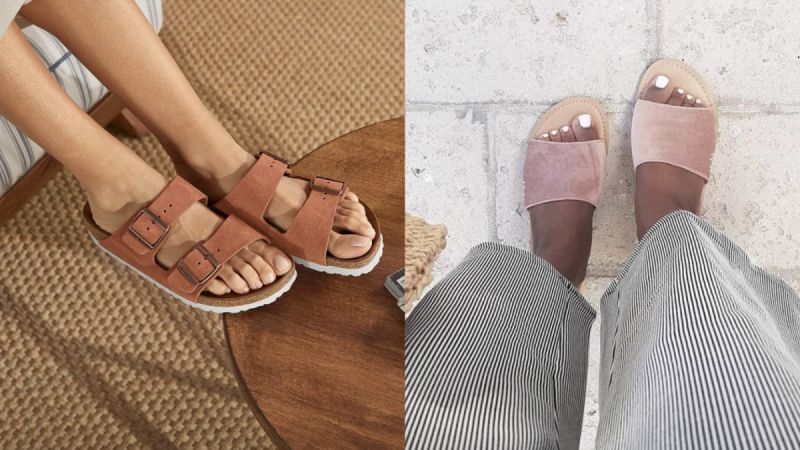What are the best lacrosse heads for each position. How can you customize your lacrosse stick for optimal performance. Which factors should you consider when selecting lacrosse gear. Discover the answers in our comprehensive guide.
Position-Specific Lacrosse Heads: Choosing the Right Tool for Your Role
Selecting the ideal lacrosse head is crucial for maximizing your performance on the field. Each position requires specific features to enhance play style and effectiveness. Let’s explore the best options for attackers, midfielders, defenders, and goalies.
Attack: Precision and Control
Attackers need lacrosse heads that offer superior ball control and quick release. The Powell Lacrosse Ratchet Attack Head stands out with its narrow U-shaped design, providing increased hold for rapid shots and passes. Its adjustable stiffness allows players to fine-tune the head to their preferences, while the focused scoop and rounded sidewall facilitate easy stringing.
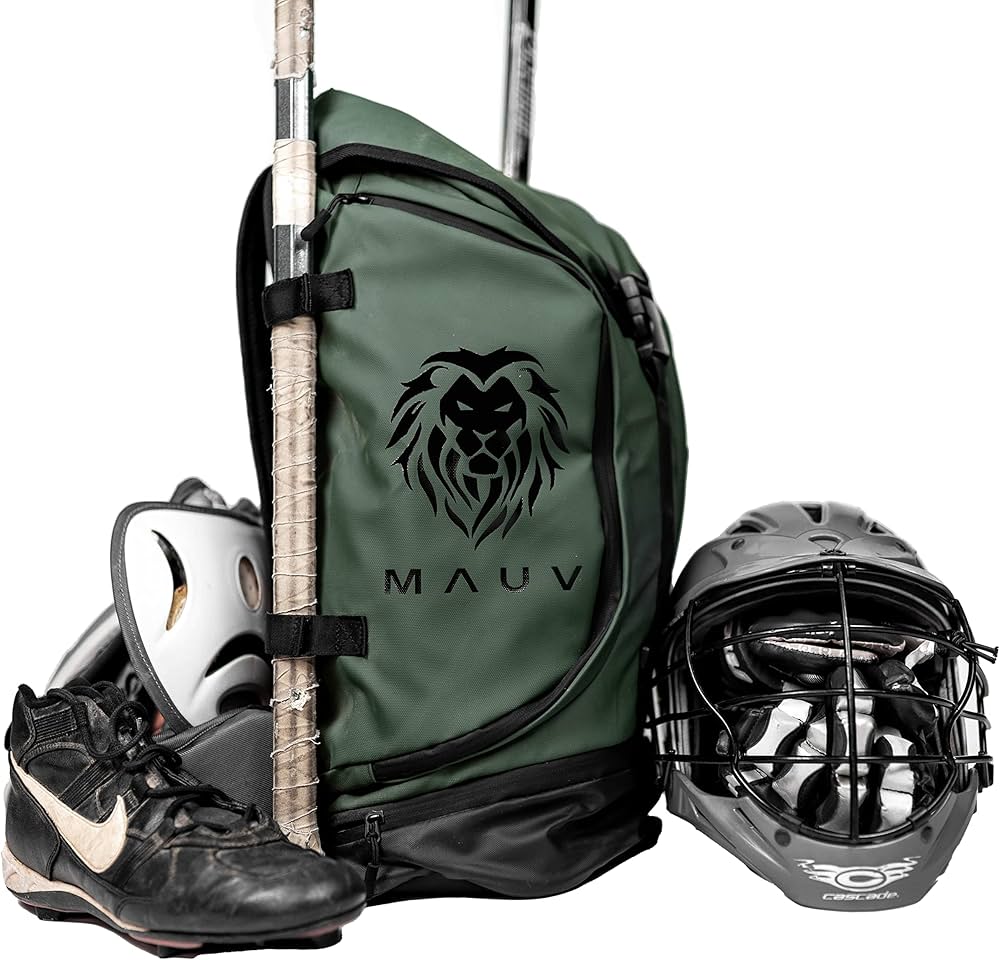
Midfield: Versatility is Key
Midfielders require a head that excels in both offensive and defensive scenarios. The Warrior Evo Warp Pro Midfield Lacrosse Head offers a wider face shape for an expanded catching area, while still maintaining sufficient ball control for quick shots. Its stiff sidewalls and focused scoop make ground ball pickups effortless, giving midfielders the best of both worlds.
Defense: Dominating Ground Balls
For defenders, ground ball control is paramount. The Maverik Tank Universal Lacrosse Head boasts an extra wide face shape and stiff sidewalls, making it a powerhouse for scooping up loose balls. Its angular design allows defenders to plow through opponents, while still enabling accurate outlet passes for quick transitions.
Goalie: The Last Line of Defense
Goalies need equipment designed for lightning-fast reactions and maximum blocking ability. The Nike CEO U Goalie Head features flat sidewalls and a paddle-like face shape, creating a formidable barrier against shots. Its angled scoop helps goalies handle bounce shots effectively, while still allowing for smooth ground ball pickups.

Customizing Your Lacrosse Stick: The Art of Stringing
While choosing the right head is crucial, customizing your pocket can take your game to new heights. A personalized pocket can enhance your stick’s performance, tailoring it to your unique playing style.
Essential Stringing Supplies
- Mesh (pre-cut rolls or sheets)
- Sidewall strings
- Shooting laces
- Nylon string
- Mesh cutter
Consider investing in a comprehensive stringing kit, such as the Powell Lacrosse Stringing Kit, which includes all the essentials in a convenient carrying case. This allows you to restring your entire stick from the comfort of your home.
Advanced Stringing Techniques
Once you’ve mastered the basics, experiment with advanced materials and techniques:
- Colored wax mesh for improved weather resistance
- Variable diamond mesh for optimal ball control
- Unique pocket styles like the double U
Remember, the perfect pocket complements your head’s natural strengths while addressing any weaknesses. Factors like whip, hold, and release can be fine-tuned through careful stringing.

The Impact of Proper Equipment on Performance
How does the right gear influence your game? Let’s break down the key benefits of using position-specific equipment and customized pockets:
- Improved ball control and retention
- Faster shot and pass release
- Enhanced accuracy in shooting and passing
- Better ground ball pickup efficiency
- Increased confidence in your abilities
By investing time in selecting the right head and crafting a personalized pocket, players can significantly boost their on-field performance and overall enjoyment of the game.
Evolving Technology in Lacrosse Gear
The world of lacrosse equipment is constantly advancing, with manufacturers introducing innovative materials and designs to enhance player performance. How are these technological advancements shaping the game?
Lightweight Yet Durable Materials
Modern lacrosse heads are often crafted from high-tech polymers that offer an optimal balance of strength and weight. These materials allow for increased maneuverability without sacrificing durability, giving players an edge in fast-paced situations.

Smart Stringing Systems
Some manufacturers are introducing pre-strung heads with advanced pocket designs that promise consistent performance right out of the box. While these can be convenient for beginners, many experienced players still prefer the customization offered by traditional stringing methods.
Ergonomic Designs
Lacrosse head designs are becoming increasingly ergonomic, with shapes that complement the natural movements of players in specific positions. This trend towards specialized equipment is likely to continue as manufacturers seek to give players every possible advantage on the field.
Maintaining Your Lacrosse Equipment for Longevity
Proper care and maintenance of your lacrosse gear can extend its lifespan and ensure consistent performance. What steps should you take to keep your equipment in top condition?
Regular Cleaning
Clean your lacrosse head and pocket after each use to remove dirt, grass, and sweat. Use warm water and mild soap, avoiding harsh chemicals that could damage the materials. Allow the equipment to air dry completely before storage.
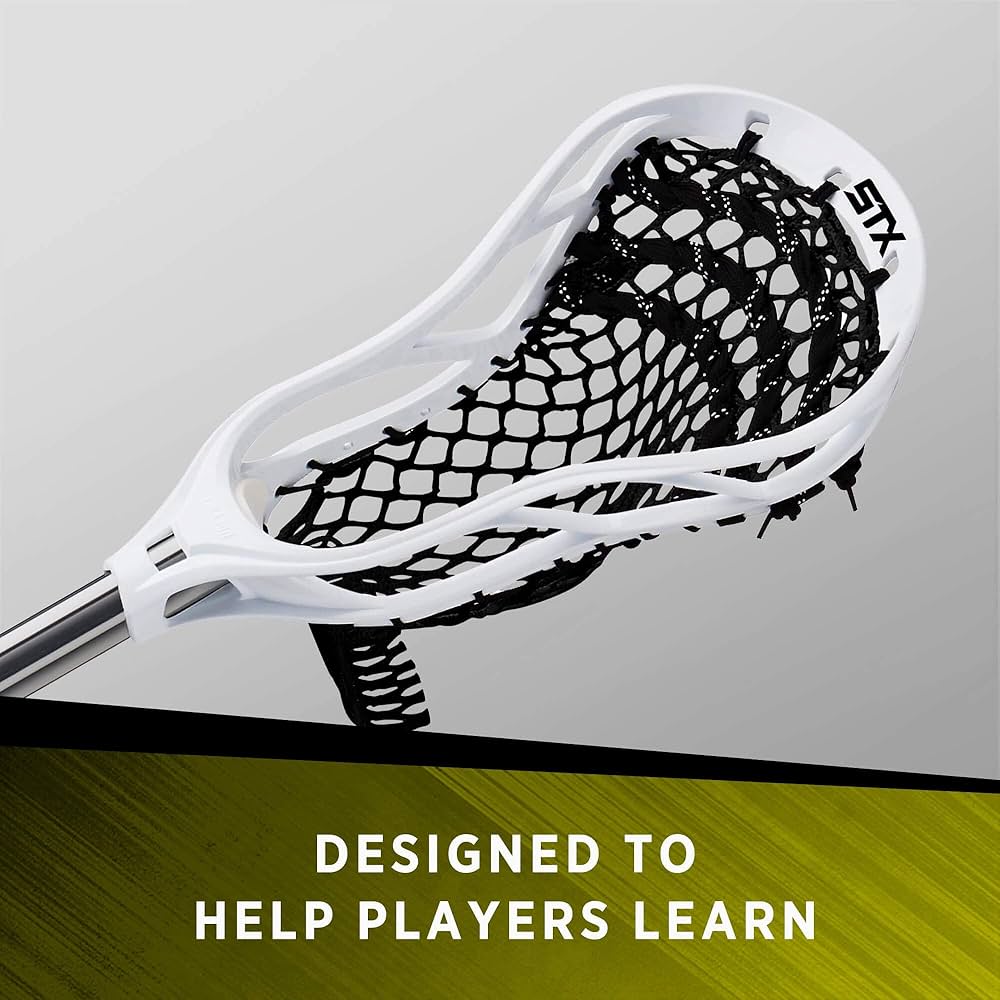
String Maintenance
Regularly check your pocket’s strings for signs of wear or fraying. Replace individual strings as needed to maintain the pocket’s shape and performance. Consider re-stringing your entire pocket at least once per season for optimal results.
Proper Storage
Store your lacrosse stick in a cool, dry place away from direct sunlight. Avoid leaving it in extreme temperatures, such as in a hot car, as this can warp the head or damage the strings.
The Psychology of Equipment Choice in Lacrosse
The gear you choose can have a significant impact on your mental game. How does equipment selection influence a player’s confidence and performance?
The Confidence Factor
Using equipment that feels right can boost a player’s confidence on the field. This increased self-assurance often translates to improved performance, as players feel more capable and in control of their actions.
Ritual and Superstition
Many players develop rituals around their equipment, such as using a specific stringing pattern or always wearing the same gloves. While these rituals may not have a direct physical impact, they can provide psychological comfort and focus.

Adapting to Change
Switching to new equipment can be challenging, both physically and mentally. Players must be willing to adapt and give themselves time to adjust to new gear, trusting that the benefits will outweigh any initial discomfort.
Balancing Cost and Quality in Lacrosse Equipment
High-quality lacrosse gear often comes with a hefty price tag. How can players find the right balance between cost and quality when selecting their equipment?
Investing in Key Pieces
Prioritize spending on the most crucial elements of your kit, such as your head and shaft. These components have the most significant impact on your performance and are worth the investment in quality materials and design.
Budget-Friendly Alternatives
Look for previous year’s models or sales to find high-quality gear at reduced prices. Many manufacturers offer mid-range options that provide excellent performance without breaking the bank.
DIY and Customization
Learning to string your own stick can save money in the long run and allow for greater customization. Invest in quality stringing materials and practice your technique to achieve professional-level results at a fraction of the cost.

By carefully considering your position, playing style, and budget, you can select lacrosse gear that not only enhances your performance but also fits your individual needs. Remember that the best equipment is the one that feels right in your hands and allows you to play with confidence and skill. Whether you’re a seasoned veteran or just starting out, taking the time to choose and customize your lacrosse gear can make a significant difference in your enjoyment and success on the field.
Select The Ideal Lacrosse Head For Your Position
When it comes to lacrosse, having the right equipment can make all the difference in your game. This is especially true for lacrosse heads, which come in a variety of shapes and sizes designed for specific positions and playing styles. As an avid lacrosse player, choosing the head that compliments your strengths on the field should be a top priority. But with so many options out there, it can be tricky to select the ideal lacrosse head for your position.
Here’s a breakdown of the best lacrosse heads for each position to help you upgrade your game:
Attack
As an attack player, you want a lacrosse head that provides superior ball control and quick passing ability. The Powell Lacrosse Ratchet Attack Head is a top choice for attackers thanks to its narrow U-shaped design. This gives you increased hold on the ball for quicker shots and passes on the crease. The ratchet mechanism also allows you to adjust the stiffeness, letting you customize the head to your exact playing style. Stringing is easy too with a focused scoop and rounded sidewall. Grab the Ratchet Attack Head for dominating the offensive end this season.
Midfield

Midfielders need a head that excels at both offense and defense. The Warrior Evo Warp Pro Midfield Lacrosse Head delivers versatility for transition players. Its wider face shape gives you an expanded sweet spot for catching difficult passes. But it still provides enough ball control for quick shots on settled offense. You’ll also appreciate the head’s stiff sidewalls and focused scoop that make ground balls a breeze. With the Evo Warp Pro, midfield players finally get the best of both worlds.
Defense
For defenders, ground ball control is a must. The Maverik Tank Universal Lacrosse Head gives you maximum ground ball scooping power thanks to its extra wide face shape and stiff sidewalls. Its angular design plows through the competition for effortless ground ball pickups. But don’t let that fool you – this head can still rifle accurate outlet passes to transition. The Tank lives up to its name as an unstoppable force around the crease. Defensemen who wield this head will dominate possession and fast breaks.
Goalie

Goalies need equipment built for reaction time and blocking ability. The Nike CEO U Goalie Head acts like a brick wall in the net thanks to its flat sidewalls and paddle-like face shape. This extra surface area will stop point blank shots that other heads can’t. The CEO U also allows goalies to get a hand on bounce shots thanks to its angled scoop. And don’t worry about ground balls – this head scoops with the best of them. Considering adding a CEO U head to own the crease this season.
Finding your lacrosse soulmate requires putting your head and stringing skills to the test. After mastering these fundamentals, it’s all about finding a head that accentuates your strengths on the field. For attackers it’s ball control, midfielders need versatility, defenders want ground ball power, and goalies need maximum blocking ability. Luckily most lacrosse gear brands offer heads specialized for each position. Do your research to find the right technology and shape for how you play.
While a position-specific head gives you an advantage, you’ll still need to pair it with a personalized pocket. Stringing your stick to match your playing style takes things to the next level. Assemble a lacrosse stringing kit and experiment to find your ideal pocket. Features like whip, hold, and release channel the head’s natural strengths while covering weaknesses. Master stringers also consider additional variables like head style, mesh, and sidewall configuration when designing the ultimate pocket. With the right mesh and strings, you can transform an average head into your dream setup.
Browse a wide selection of lacrosse stringing supplies to begin crafting your custom pocket. retailers offer pre-cut mesh rolls, sidewall strings, shooting laces, and wraps from all the top brands. Consider starting with a Powell Lacrosse Stringing Kit that provides all the essentials in one bag. These kits include mesh, nylon string, sidewall string, and laces so you can restring your entire stick from home. The convenient carrying case even includes a mesh cutter for sizing your materials. Look for options with variable diamond mesh for optimal ball control. Once you nail down stringing fundamentals, move onto advanced materials like coloured wax mesh and try unique pocket styles like the double U.
Building a custom lacrosse pocket takes time, but pays off huge on the field. Along with a position-matched head, your personalized pocket improves feel, release, and hold for next-level performance. Don’t settle for stock stringing – take matters into your own hands this season. With high quality mesh, strings, and tons of online tutorials, you’ll be launching rockets and scooping grounders before you know it. Mastering the art of stringing gives your game an instant edge.
Determine The Correct Pocket Placement And Depth
When stringing a lacrosse head, pocket placement and depth impact everything from ball control to passing and shooting. While sticking to general stringing guidelines is a good start, optimizing your pocket for your position and playing style takes things to the next level. Read on to learn about pocket fundamentals, and how to dial in placement and depth for peak performance.
First, let’s review some key rules of thumb when stringing up a pocket. In men’s lacrosse, the ball must sit above the bottom of the head’s sidewall when at rest. Women’s sticks must meet similar requirements, with pockets larger than 4.5 inches measured top to bottom illegal in most leagues. Regarding placement, the ball should sit just above the middle of the head. This central position gives you the most control across scooping, cradling, and passing motions.
Use these starting points to position a basic pocket, then consider the following factors to fine tune placement and depth for your game:
Position
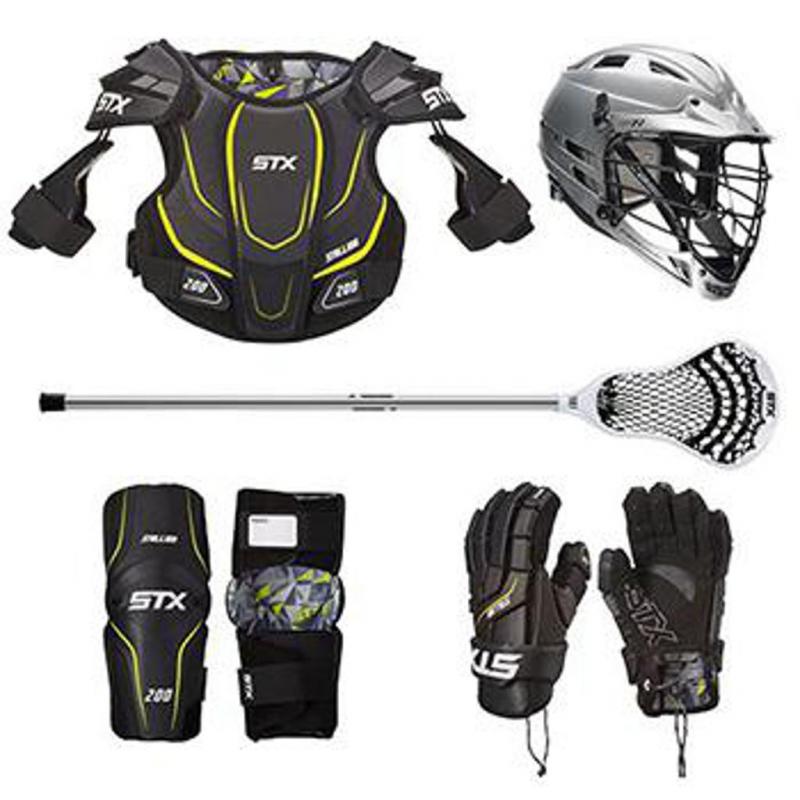
Attack players benefit from pockets placed slightly higher in the head to improve ball control and quick stick passes around the net. Midfielders need a more central pocket placement for versatile play across the entire field. Pockets can also be centered or offset to one side depending on your dominant hand. Defenders benefit from a lower pocket that hugs the head for boxed out ground ball pickups.
Pocket Shape
The actual shape of your mesh pocket also plays a role in ideal placement. Pockets like a tight U position the ball well for cradling but can reduce hold. A wider multi-U shape gives you more overall ball control. Make sure to balance hold versus release by placing your preferred pocket shape in the optimal spot.
Shooting Style
Are you a low-to-high shooter or do you rely more on sidearm and overhand shots? Position and depth impact the whip you generate for different shot types. A low central pocket emphasizes your lower release points. But a high pocket paired with a stiff head boosts velocity on overhand rips. Consider your shooting mechanics when fine tuning pocket specs.
Mesh Style
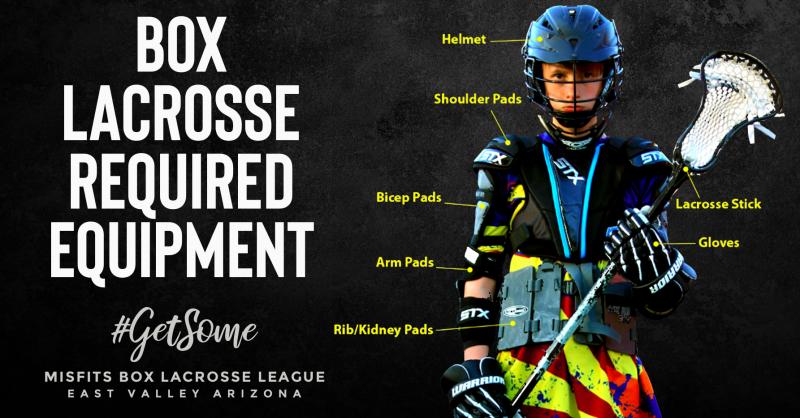
The mesh you string with influences overall pocket feel. Premium mesh like Power Pockets by ECD provide extra hold for maximum control. Materials like Thompson shirts stretch mesh give you more customizable whip on passes and shots. Use stiffer mesh for hold-focused pockets, and soft mesh when emphasizing release.
While general guidelines provide a starting point, optimizing pocket placement and depth requires customization based on your game. Assess attributes like hand dominance, position, shooting style, and mesh type to determine your ideal setup. The ability to dial in pocket specs is what separates average players from the lacrosse elite.
Of course you’ll also need a fully stocked lacrosse stringing kit to bring your vision to life. Choose a kit that contains all the essentials – mesh, sidewall strings, shooting laces, and nylon. Brands like Powell Lacrosse offer convenient all-in-one kits packed in a carrying case. Look for variable mesh options to increase customization of diamond size and overall pocket feel. Don’t forget extras like scissors, gloves, and ball stoppers to simplify the stringing process.
With premium stringing supplies and a smart stringing strategy, you’ll have the skills tostring up the ultimate pocket this season. Getting placement and depth dialed in improves hold, control, and release for every type of play. Your pocket acts as an extension of your stick, so personalize it to amplify your strengths on the field. Own the middle of the field and shoot with precision simply by optimizing your stringing specs. The right pocket takes your game to the next level.
Start experimenting with pocket placement to enhance aspects of your game. For added hold, shift the pocket higher or choose a narrower U or channel shape. A lower central pocket boosts control for ground balls and passing. Wider pocket styles like a double U enhance cradling for midfield play. Pair with mesh and sidewall strings that match your desired release and whip. In time, you’ll master creating customized pockets that make the ball feel like an extension of your stick. Unlock your full potential by stringing for ultimate control this season.
Choose Between Soft And Hard Lacrosse Mesh
One of the biggest decisions when stringing a lacrosse head is choosing your mesh type. From traditional nylon to advanced materials like memory mesh, today’s options strike a balance between softness and stiffness. Determining the right mesh comes down to optimizing features like pocket feel, hold, and release for your position and playing style.
When selecting lacrosse mesh, consider the following guidelines:
Stiffer Mesh Benefits
Hard mesh maintains its shape better for consistent pocket feel. It also provides superior hold for confident cradling and safe ball retention on checks. Players who favor control over increased release speed benefit most from stiff mesh.
Softer Mesh Benefits
Soft mesh offers more customizable stringing for pockets with greater whip and improved ball flight. The material stretches better for increased hold after breaking in. For shooters and passers seeking shot speed, softer mesh optimizes release.
Mesh Materials
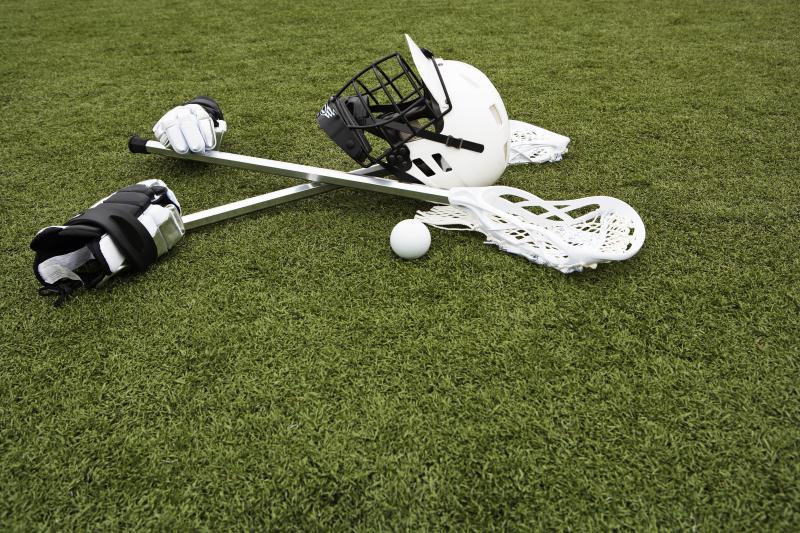
Traditional nylon mesh provides an ideal blend of control and release. Polyester and memory mesh offer advanced softness for extra whip. Harder materials like polyethylene mesh boost durability and hold. Consider coating treatments like wax or silicone that modify stiffness as well.
Pocket Placement
The optimal mesh stiffness depends partly on pocket placement. A low pocket paired with soft mesh increases overall whip. A high pocket benefits from stiff mesh to maintain shape. Determine ideal pocket location first, then choose mesh to enhance performance.
While general guidelines provide a starting point, the best mesh for you depends on personal preference. Test mesh options to find your ideal blend of hardness and softness based on your position and playing style.
Midfielders may prefer softer mesh for quicker releases when pushing transition on the fast break. Meanwhile, defenders benefit from thicker polyethylene mesh that holds its structure for superior ball control. For goalies, nylon mesh provides the perfect balance of responsiveness and hold when protecting the crease.
You can also mix and match mesh types within a pocket. Try soft mesh up top for increased whip, paired with a stiff lower section for overall structure. Stringing with different meshes lets you optimize different pocket areas.
Along with dialing in your mesh specs, be sure your lacrosse stringing kit contains premium ingredients to bring your pocket vision to life. Choose an all-in-one option like the Powell Lacrosse Stringing Kit for a complete supply of mesh, sidewall string, shooting strings, and laces. Look for variable diamond mesh that lets you customize softness and ball control.
With high quality mesh and strings, you’ll be launching precise shots and scooping ground balls in no time. Finding your ideal blend of stiffness and stretch gives your game an instant edge. Your mesh directly impacts the feel, hold, and release of your pocket. Put in the time to experiment with different materials until you master the art of stringing.
While mesh selection comes down to personal preference, most players end up with a blended approach. Multi-mesh string jobs allow you to optimize different pocket areas with precision. Keep testing mesh options and pocket placements until the ball flies effortlessly from your stick. When you discover your perfect mesh and strings, you’ll build pockets that feel like an extension of your own game.
This season, experience the confidence that comes with dialing in your stringing specs. With premium mesh and strings, you dictate the unique feel, release, and responsiveness of your pocket. Take your game to the next level by personalizing your equipment to match your unmatched skills. The ball will fly off your stick with purpose as defenders are left in the dust. Become a master stringer and take control of your lacrosse destiny.
Learn Proper Stringing Techniques Step-By-Step

Stringing a lacrosse head requires mastering essential knots and string placements to build a consistent, high performing pocket. While getting a basic pocket strung is straightforward, optimizing features like throw, hold, and ball control requires learning nuanced stringing techniques. Follow these key steps to level up your stringing skills this season.
Prep the Head
Start by mounting your head to a handle and ensuring the screw is tightened properly. Use stringing pliers to thread the sidewall string through each hole, leaving equal lengths hanging. Tie starting knots in the sidewall to secure it temporarily. Then use a lighter to singe the ends of nylon strings to prevent fraying.
Install the Mesh
Measure your mesh and cut it to the appropriate width using mesh cutting pliers. Fold it in half to find the middle point along the top. Align this midpoint with the center of the scoop area. Then thread one sidewall string through each mesh diamond moving down to secure the mesh. Pull the diamonds tight and tie off each sidewall with a double knot.
Form the Pocket Shape
Shape the basic pocket by gradually pulling the mesh diamonds outward in the desired formation. Common pocket styles include the single U, double U, or channel/V shape. Skip diamonds as needed to increase pocket depth. Tie off the bottom sidewalls with double knots to set the pocket.
Install Shooting Strings
Add shooting strings using a simple knot or woven lacing technique. Thread the bottom string first, then add the top shooting string. Space strings evenly for consistent channel width. For extra hold, add multiple shooting strings using a cross-lacing technique.
Insert Lacing
Thread nylon laces up and down the mesh diamonds moving outwards from the pocket center. Use a simple knot for standard lacing or a more intricate criss-cross technique. Pull the laces snug and tie them off for increased structure and ball retention.
Secure Sidewalls
With the main pocket structure and lacing complete, tightly tie knots along the entire sidewall string. Knots should be spaced 1-2 diamonds apart. Trim the excess sidewall when finished.
By methodically following these fundamentals, you’ll gain the skills to string consistent pockets every time. As you gain experience, introduce advanced techniques like adding a third shooting string or stacking multiple sidewall knots per diamond.
Along with technique, premium stringing supplies are crucial for next-level pockets. Choose a complete Powell Lacrosse Stringing Kit so you have everything needed in one bag. Look for variable diamond mesh options to increase customization of overall pocket feel. And don’t forget extras like ball stoppers, gloves, and mesh wax to simplify stringing.
With the right gear and fundamental techniques mastered, you’ll be launching bar-down snipes in no time. Stringing your own sticks gives you an edge by creating the ideal pocket for your game. Take your skills to the next level this season with pro-level stringing abilities.
Remember that consistent practice is vital when developing specialized stringing skills. Set aside time each week to experiment with new techniques. Try manipulating pocket attributes like depth, shape, shooting strings, and lacing until you achieve your desired performance. Repetition develops the muscle memory needed for precise string jobs.
While following general steps is important, there are many nuanced techniques to make pockets perform exactly how you want. Be patient, stay detail oriented, and don’t be afraid to tweak things until the ball flies perfectly off your stick. Your pocket is an extension of your game, so take the time to master stringing it to match your unmatched skills.
Pick Durable Shooting Strings That Won’t Break
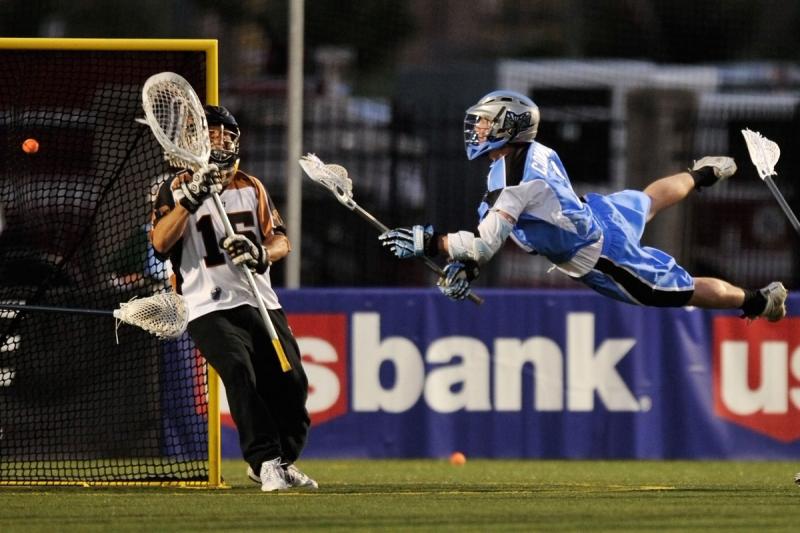
When it comes to lacrosse, having the right gear can make all the difference in your game. As any seasoned player knows, one of the most important pieces of equipment is your shooting strings. These strings connect the top of the lacrosse head to the bottom, creating a pocket that allows you to catch, cradle and pass the ball with precision. However, not all shooting strings are created equal. If you want your strings to stand up to intense gameplay without snapping, you need to choose a durable yet flexible material.
Nylon has long been the go-to shooting string material for its blend of strength and stretchiness. Lacrosse brands like Powell Lacrosse use nylon strings such as the Powell Traditional Shooter, known for its ability to maintain a consistent, accurate pocket shape after heavy use. The key is looking for high-quality nylon blends rather than pure nylon, which tends to lack durability over time.
Another popular option is Dyneema polyethylene fiber, marketed under brand names like DynaPro and Ultra Strong. With up to 15 times the strength of steel per weight, these advanced polyethylene fibers make shooting strings that can withstand all kinds of abuse on the field. Maverik’s MetaMesh and StringKing’s Type 4 Mesh are two great Dyneema string kits perfect for players who tend to snap their shooting strings from extremely forceful shots.
For an ultra high-tech shooting string, Spectra polyethylene fibers are also gaining popularity for their unparalleled durability. Made from an incredibly strong fiber used in bulletproof vests and fishing line, Spectra brands like Thruster claim to create “unbreakable” shooting strings. The material lacks stretch, but makes up for it in sheer ruggedness. As an added bonus, Spectra’s slick surface helps prevent stringing friction and pinching.
Traditional materials like rawhide and leather offer time-tested toughness as well. Natural gut strings may not be quite as durable as synthetic blends, but many players prefer the feel. Brands like JimaLax provide waxed, water-resistant rawhide and calfskin laces for pros who swear by the classic lacrosse string experience.
Choosing The Right Lacrosse Mesh

The mesh attached to the shooting strings is just as crucial for finding that perfect pocket sweet spot. Stiff meshes made of materials like polyethylene hold their shape better and provide more accuracy. Softer nylon meshes excel at “bagging out” over time to create a deeper, more flexible pocket. It all comes down to balancing durability with the right amount of “give” for your personal playing style.
Stringking and ECD make some of the most consistently high-performing stiff meshes like Type 3F or Pro Mesh LAX. For intermediate players who need a blend of hold and flex, Maverik’s Optik Mesh combines stiffer high-Vislon nylon with softer polyester cross-threads. Beginners new to stringing may prefer an all-nylon soft pocket mesh like Stringking’s entry-level Type 3X.
You can also choose specialty meshes with unique benefits. Goalies tend to favor a loose mesh for maximum ball control. Mechanical and memory-molded meshes like Stringking’s Type S offer advanced shaping options. Or check out East Coast Mesh’s Premium Wax Mesh for serious water resistance and weather protection.
DIY Stringing Kits For Every Skill Level
Getting the perfect custom pocket requires the right mix of shooting strings and mesh. Buying them separately can get expensive, so many brands offer all-in-one lacrosse stringing kits. These kits provide everything you need for restringing your stick to your exact specifications, saving money and hassle.
For new players, ECD’s Super Kit combines basic 12 diamond mesh with 420 denier nylons for an easy stringing experience. StringKing Complete pocket kits feature premium Type 4F mesh with heavy-duty shooting strings for more advanced setups. And for hardcore stringing fans, brands like Thruster and Jimalax sell pro custom kits with premium meshes, laces, sidewall strings and more.
You can also build your own custom stringing kit. Start with a high-quality mesh like Thruster’s Thunder Mesh or StringKing Type 3F. Add durable co-polyester shooting strings from a brand like JimaLax or Maverik. Grab premium nylon laces for sidewall strings, plus optional extras like shark tooth ends, straight brake nylon and training mesh. It takes experimenting to find your perfect pocket recipe, but building your own custom kit offers the most options.
Choosing The Right Strings For Your Position
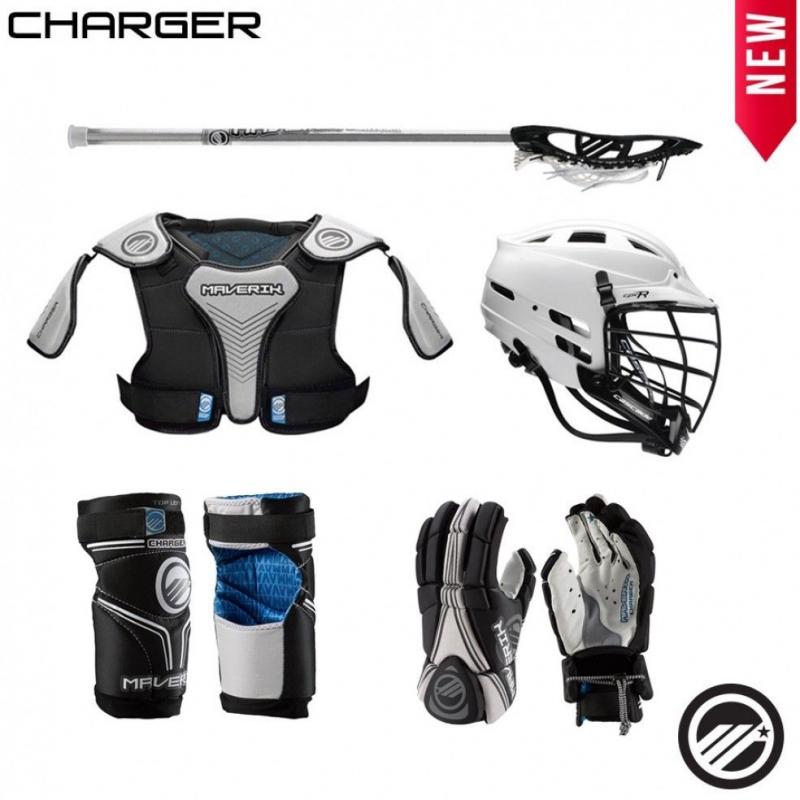
Your position on the field can also impact what shooting strings work best. For example, midfielders tend to prefer a mid- to deep-pocket depth for running with the ball. Meanwhile, attackmen often opt for a shallow pocket placement that favors quick passing and shots on goal. On defense, a medium pocket with a decent hold is ideal for checking without dropping the ball.
The amount of whip or release when shooting also varies by position. Attackmen and midfielders need more hold and whip to wind up those powerful shots. Defenders focus more on control and ball retention when passing back downfield. Factor in your specialized needs when fine-tuning shooting strings and pocket placement.
No matter your position, upgrading old and worn shooting strings is key before they snap mid-game. By choosing flexible yet durable shooting strings and meshes, you can avoid breaking and enjoy consistent lacrosse ball handling all season long. With the right gear, you can focus on excelling at your position rather than worrying about equipment issues on the field.
Upgrade From Factory To Custom Lacrosse Stringing
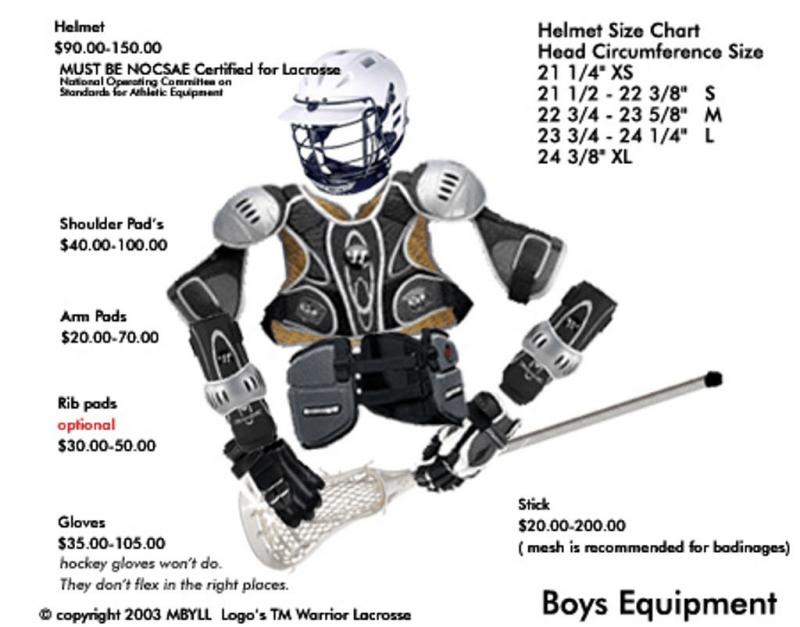
Let’s be honest: lacrosse stick stringing from the factory tends to be pretty mediocre. Mass-produced and machine-strung pockets often come loose or break down within weeks of hitting the field. If you want your stick to perform at its peak all season, upgrading to custom stringing is a must.
The best part of custom stringing is tailoring your pocket and shooting strings precisely to your playing style. A custom pocket allows for specialized ball control, hold, and release. Whether you love a deep bag for cradling or a defined channel for pinpoint passing, a custom string job dialed to your specs makes all the difference.
Custom stringing also provides way more durability than factory meshes and strings. Brand-name meshes from StringKing, ECD, and Thruster maintain their shape far longer under pressure. And hand-tied knots stay together way better than machine-tied ones. No more watching your pocket go loose or your shooting strings snap game after game.
Choosing The Best Stringing Materials
High-quality mesh is the foundation of any custom stringing job. Stiffer brands like StringKing Type 3F or ECD Pro Mesh LAX hold their structure despite abuse. For more flex, softer meshes like Thruster’s Thunder Mesh or StringKing’s Type 3X bag out nicely over time.
Premium shooting strings are a must too. Dyneema brands like MetaMesh and DynaPro offer unbeatable strength for crisp channel definition. Waxed leathers and nylons from JimaLax or Maverik provide awesome traditional shooting string feel. It’s all about finding the right blend of control and durability.
The sidewall and lace add the final touch. East Coast Mesh’s nylon laces stand up to hardcore play. For maximum water resistance, try ECD’s waxed laces. Premium kits from Thruster even include shark tooth lace ends for extra sidewall grip and hold.
Learning To String Your Own Pocket
While getting pro-strung by a lacrosse shop is always an option, learning to string your own stick offers unlimited customization. It takes practice, but you can tailor your perfect pocket each time.
Start with a basic 10-diamond midfield pocket using mid-weight mesh like StringKing Type 3X. Follow step-by-step stringing tutorials on YouTube to learn essential knots like the triple threat. As you improve, move onto advanced techniques like adding a defined channel, stacked shooting strings, and custom lace patterns.
Experiment with different mesh, shooting string, and sidewall combo until you find your ideal setup. Don’t be afraid to tweak and re-string as you zero in on what works best. In time, you’ll be cranking out pocket masterpieces in no time!
Maintaining Your Custom Pocket

One advantage of custom stringing is the ability to tune and adjust your pocket over time. As your mesh bags out from play, periodically tighten up the diamonds or tweak the shooting strings to retain that perfect shape and feel.
Be sure to re-wax mesh and shooting strings before games for moisture protection and friction reduction. Carry backup shooting string and sidewall lace in your bag for quick repairs on the fly. And when your pocket eventually does wear down, simply re-string it back to new.
Compare that to constantly having to replace warped factory mesh or busted factory strings. With custom stringing, your pocket ages gracefully rather than unpredictably breaking down.
Specialized Pockets By Position
Your lacrosse position also determines ideal pocket specs. Middies need mid-depth bags for carrying the ball downfield. Attack and offensive players favor defined channels for pinpoint passing. Defenders opt for pockets with hold and control when checking.
Work with your local lacrosse pro shop to design the perfect custom pocket for your position. Dialing in pocket placement, depth, hold, and release is key. An ideal custom pocket will improve your performance dramatically.
Taking the time to re-string and upgrade from factory pockets to custom is well worth the effort. With the right materials, knots, and specs, you can craft a pocket built just for you. And thanks to increased durability, you’ll avoid constantly having to replace worn-down gear mid-season. Embrace custom stringing, and unlock your lacrosse stick’s full potential!
Compare Different Lacrosse Head And Pocket Styles
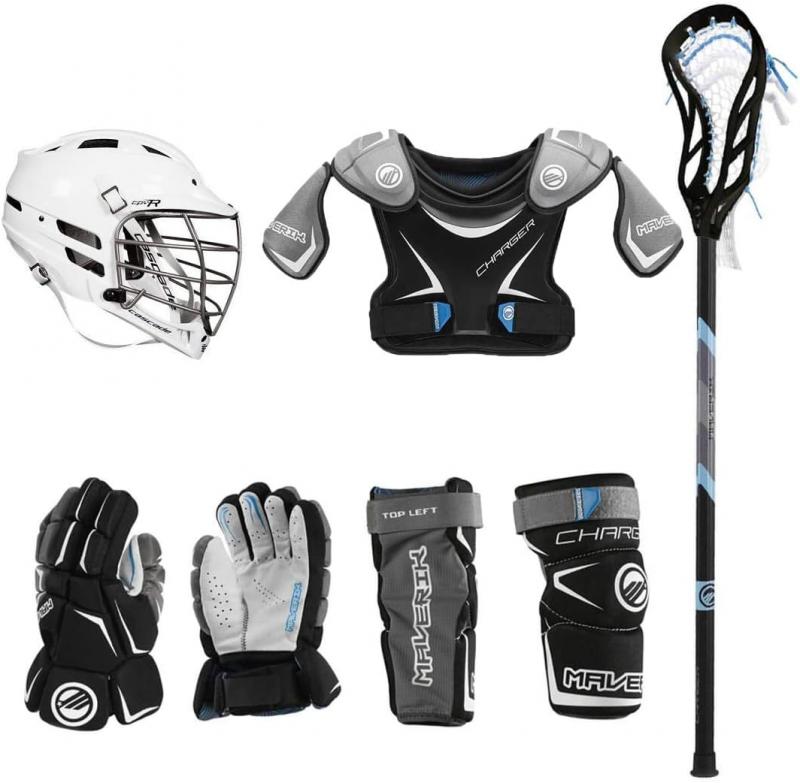
With so many lacrosse heads and pocket options out there, finding your ideal setup can feel overwhelming. But understanding the different types of heads and pockets is key to maximizing your performance on the field. Here’s an in-depth look at the most popular styles to consider.
Lacrosse Head Shapes
First, lacrosse heads come in a variety of shapes optimized for different positions and playing styles. The most common are teardrop, oval, and flare/curved.
Teardrop heads have a narrow upper section widening towards the scoop for excellent ball control. Maverik Optik and STX Stallion 700 are great examples. Oval or rounded heads like the Warrior Evo Pro 2.0 provide a bigger sweet spot helpful for beginners. Flared heads with curved sidewalls like the Nike CEO offer advanced scooping and passing abilities thanks to maximum width at the scoop.
Defensive vs. Offensive Lacrosse Heads
Heads are also engineered specifically for offense or defense. Defensive heads focus on checking and cause turnover abilities, with stiff sidewalls and a flattened scoop. Check out the Maverik Tank or STX Hammer. Offensive heads optimize cradling, catching, passing, and shooting with more flexible sidewalls, maximum offset, and a rounded scoop. The ECD Bravo X6 is a stellar offensive model.
Midfielder and Attack Lacrosse Heads
For midfielders who need to balance offense and defense, mid-offset hybrid heads with versatility are best. The Maverik Optik has become a midfield staple. Attack players who live on the offensive end benefit most from heads that excel at quick passing and sniping shots on goal, like the pinpoint accurate ECD Rebel X6.
Pocket Styles: Shallow, Medium, Deep
Choosing the right pocket style and depth is also crucial. Shallow pockets have the minimum amount of mesh attached, creating a narrow channel. This allows for quick ball release but less holding ability. Medium pockets with 3-4 shooting strings offer balanced control. Deep pockets with low ball placement and maximum mesh maximize hold for big checks and cradling but sacrifice some accuracy.
Attack players tend to prefer shallow pockets for precision passing while defenders need deeper bags for possession. Midfielders do well with medium setups for versatility when transitioning between offense and defense.
Custom Pockets vs. Universal

You can also choose between universal pockets and full-custom setups. Universal pockets come pre-strung with basic mid-depth bags for easy installation right out of the package. Custom stringing allows tailoring pocket placement, shooting strings, mesh, and sidewall patterns to your exact preferences.
While universal pockets provide convenience, custom offers ultimate finesse. Experienced players get the most benefit from custom stringing lacrosse heads to their specialized needs.
Stiff vs. Soft Lacrosse Mesh
Mesh stiffness is another big factor affecting ball control. Hard meshes like StringKing Type 3F or ECD Pro Mesh LAX hold shape much longer for consistent pockets. Softer meshes like Thruster’s Thunder Mesh provide more flexible break-in for maximum finesse over time.
Stiffer meshes tend to be preferred for precise passing while softer meshes excel at deeper pocket styles for cradling. It’s smart to carry sticks with both stiff and soft meshes for versatility.
Co-Polymer vs. Traditional Shooting Strings
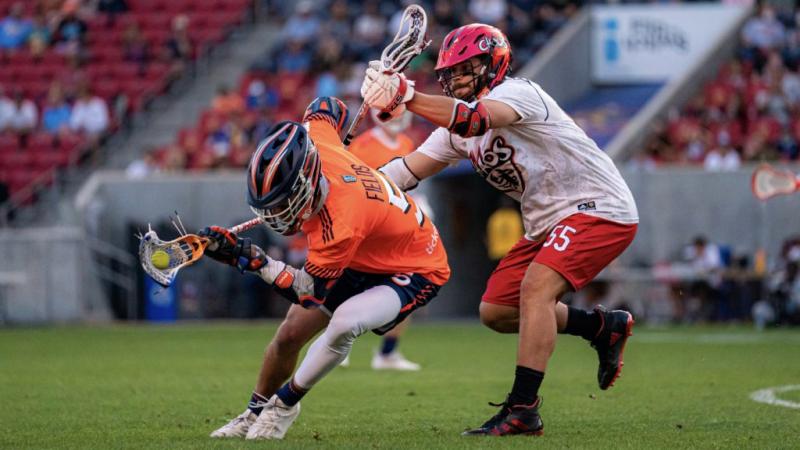
Choosing between modern co-polymer materials and traditional shooting strings also impacts performance. Advanced fibers like Dyneema offer unmatched durability and energy transfer for insane ball speed. Rawhide, leather, or waxed lace provide classic shooting string feel and hold.
Blends seem to work best, pairing aged leather laces up top with synthetic bottom stringing. This enables consistent pocket structure with trusted hold and release.
With so many head and pocket variables, it pays to experiment with different setups until you find your personal winning combo. Don’t be afraid to constantly tweak and adjust as you tailor your lacrosse gear to your evolving play style.
Shop For Complete Lacrosse Stringing Kits Online
Stringing up lacrosse sticks from scratch can be time-consuming and frustrating, especially for new players. An easier solution is to shop online for pre-packaged stringing kits that provide all the essential components in one place.
Complete stringing kits include everything you need to restring lacrosse heads to your specifications. All the mesh, sidewall, shooting strings, and accessories come neatly bundled, saving you the hassle of sourcing each piece separately.
Many major lacrosse brands now offer comprehensive stringing packages for total customization convenience. Here’s what to look for when shopping for your next complete pocket kit online.
High-End Mesh
The mesh is arguably the most important part of any stringing kit. Look for kits that include premium synthetic mesh known for maintaining shape and durability. StringKing, ECD, and Thruster make some of the best mesh on the market like Type 4F, Pro Mesh LAX, and Thunder Mesh.
For added customization, some kits will include multiple mesh options to let you string different pockets. Optik Universal Pocket Kits from Maverik feature both firm and soft mesh options to mix and match.
Durable Shooting Strings
Shooting strings take a beating, so quality matters here. Dyneema-based shooting strings like DynaPro or Ultra Strong offer next-level durability and energy transfer. For weatherproof performance, waxed shooting strings from East Coast Mesh or Jimalax are ideal.
Look for kits that incorporate advanced shooting strings along with traditional materials like leathers, nylons, and laces for versatility. StringKing Complete kits pair synthetic bottom stringing with trusted rawhide shooting laces up top.
Premium Sidewall String

The sidewall lace secures the mesh to the sidewalls, so durability is key. Seek out stringing kits that utilize premium waxed laces from ECM or high-strength nylon laces from brands like Thruster. It will make a big difference in pocket longevity.
Some kits also include extras like sidewall nylons or sharktooth lace ends for advanced grip and hold. The more customization options, the better.
Easy Step-By-Step Instructions
Quality materials are important, but detailed stringing instructions take guesswork out of the process. Look for stringing kits that provide step-by-step stringing guides tailored to that exact mesh and configuration.
StringKing packages include pro-level patterns to replicate popular pocket styles. Or Maverik Optik kits feature clear beginner-friendly directions for basic mid-depth pockets. Taking the frustration out of stringing is a big help.
Specialized Kits By Skill Level
Some brands will offer separate kits tailored specifically to beginners, intermediates, and pros. As a beginner, look for starter kits with basic mesh and shooting strings optimized for easy stringing. Intermediates will appreciate mid-tier kits with upgraded materials to develop skills.
Pro kits with premium components throughout provide unlimited customization for experts. Look for options targeted to your current ability level.
With lacrosse gear, you get what you pay for. Investing in a complete pro-level stringing kit from the start will save you money and headaches in the long run compared to buying piecemeal. It provides everything you need for consistent pockets that hold up season after season.
Do your research to find stringing kits with top-shelf mesh, laces, strings, and accessories trusted by the pros. Select kits with specialized options for your skill level and position. Then enjoy the pride and performance of stringing up your own superstick!
Watch Instructional Stringing Videos For Guidance
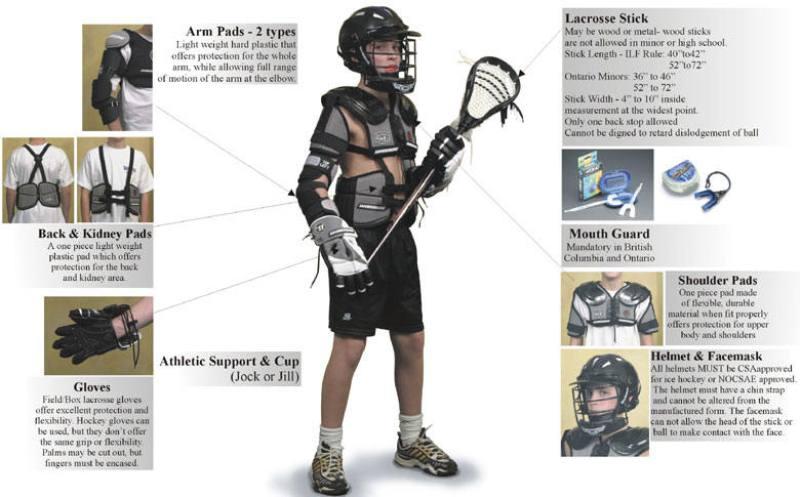
Stringing up your own lacrosse stick can be an intimidating process, especially for beginners. Thankfully, there are tons of helpful YouTube videos that provide step-by-step stringing tutorials and guidance.
Whether you are stringing your first pocket or perfecting an advanced mesh pattern, instructional videos give you a visual walkthrough of the techniques. They allow you to work alongside an expert, learning proper form and tips that help avoid frustration.
Here are some key things to look for when watching lacrosse stringing tutorials online.
Easy Step-By-Step Instructions
The best instructional stringing videos will break the process down into simple, repeatable steps from start to finish. They should provide clear direction on items like pocket placement, knot tying, shooting string setup, and attaching sidewalls.
Maverik offers excellent beginner stringing tutorials that cover basic techniques like starting anchor knots, essential interlocks, and finishing the sidewalls. As you advance, more complex videos demonstrate advanced shooting strings, roll locks, and unique lace patterns.
Knot-Tying Closeups
Detailed closeup shots are crucial for learning proper knot techniques. Be sure to seek out videos that zoom in on the instructor’s hands as they tie essential knots like triple threats, stacked knots, 1s, and 1x locks.
SLOW-MOTION closeups are even better for following intricacies. ECD Lacrosse has great slow-mo clips perfect for seeing knot formations clearly.
Mesh and Pocket Style Options
Since mesh and stringing preferences vary, look for stringing tutorials that cover a range of styles. Some players love a defined channel while others prefer a deep bag with maximum ball control. Seek videos tailored to pocket styles for everything from precise passing to big dodge cradling.
You’ll also want to learn techniques for soft mesh versus stiff, nylon versus co-polymer shooting strings, etc. Learning to string various pocket configurations will allow you to customize sticks for different positions and preferences.
Expert Tips and Tricks
Little pro tips from experienced stringers can go a long way toward perfecting your stringing game. Look for videos with insider advice on things like getting clean sidewall channels, reducing friction with wax, break-in techniques, and maintaining pocket shape.
StringKing’s Lacrosse DIY tutorial provides awesome advanced guidance like pre-stretching mesh, adjusting pocket memory, and sidewall lock directionality for extra hold. Next-level details make a big difference.
Video Demos of Completed Pockets
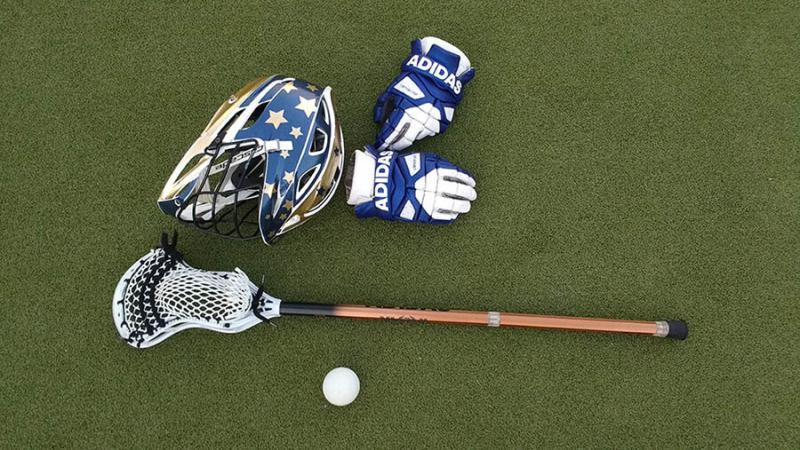
Seeing the end result in action is hugely helpful when learning. Look for videos that show full demos of completed pockets being passed, caught, cradled, and shot with. This allows you to see how different stringing styles impact ball control and performance.
Jimalax has awesome game footage of players testing handmade, custom-strung pockets in live game situations. It helps you visualize what you’re working to achieve.
With all the free coaching online, there’s no need to buy a pre-strung stick ever again. Watch plenty of videos to learn tie-offs, channels, and specialty knots. Lacrosse DIY is easier than ever thanks to generous experts who love to share their vast stringing knowledge with the world.
Ask Teammates For Stringing And Pocket Recommendations
Finding your ideal lacrosse stick setup as a beginner can feel overwhelming. One of the best shortcuts? Asking experienced teammates for their stringing and pocket recommendations.
Veteran players on your team have likely already experimented to discover what works for them. Learning from their trial and error can fast track your own development. Asking for advice from lacrosse peers you respect can pay dividends.
Here are some productive questions to ask when soliciting stringing guidance from fellow players.
Which Shooting Strings Do You Recommend?
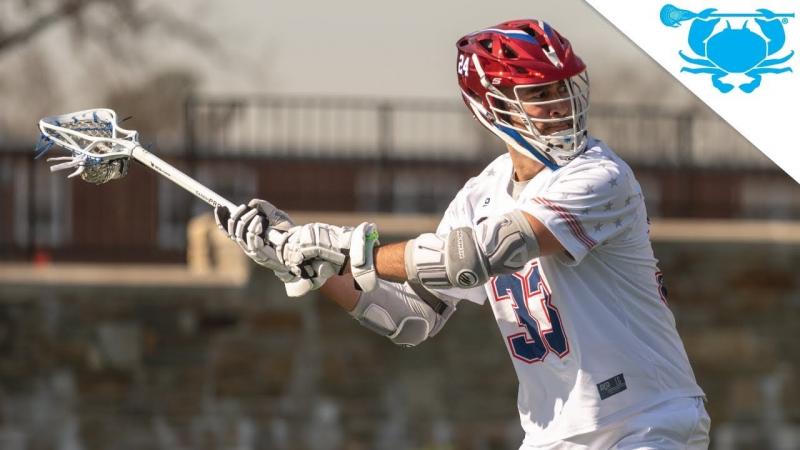
Shooting strings take a beating, so durability should be a priority. Find out which shooting string brands your teammates rely on to withstand their hardest shots season after season.
Do they prefer synthetic materials like Dyneema polyethylene for strength? Waxed leathers or nylons for weatherproofing? Asking for specific product recommendations can narrow your options.
What Mesh Do You Prefer?
Mesh affects everything from pocket structure to ball feel. Pick your teammates’ brains on whether they like soft, broken-in mesh versus stiff, rigid mesh for their play style. This insight will inform your own mesh choices.
Ask if they string different pockets with different mesh types for specialized sticks. Maybe a softer mesh for their primary and a stiff mesh for a backup stick.
Which Pocket Style Works Best For You?
Pocket configuration makes a huge difference in performance. Ask your teammates why they opted for a shallow, medium or deep pocket style and what benefits they see.
For example, midfielders may prefer a mid-depth pocket while attackmen opt for defined channels for precision passing. Learn why different positions favor certain pockets.
Any Advice On Getting Clean Sidewalls?
Getting flawless sidewall stringing takes practice. Experienced teammates likely have tricks of the trade when it comes to tight sidewalls with clean channels. Ask for any tips they’ve picked up along the way.
Little details like the right thread tension, lace coating, or staggered tie-off points could level up your stringing game in this critical area.
How Do You Maintain Your Pocket Over Time?
Keeping pockets crisp as mesh breaks in takes work. Ask teammates how they “tune up” older pockets when the mesh gets too baggy. Do they adjust diamonds, tweak shooting strings, re-wax, or even re-string completely?
Learn maintenance best practices from your teammates to extend the life of your pockets and avoid premature deterioration.
Remember, everyone has started from square one at some point. Don’t be shy asking teammates for advice – it will save you from having to learn everything the hard way. Tap into the collective wisdom within your lacrosse community.
Practice Stringing Older Heads Before Trying New Ones

Learning to string lacrosse sticks takes patience and practice. Rather than attempting to string brand new heads right off the bat, it’s smart to use older heads for practice runs first.
Stringing up an older head allows you to get comfortable with essential techniques without worrying about messing up a new piece of gear. The learning process inevitably involves some trial and error. Using an expendable head removes the pressure as you develop skills.
Here are some benefits of practicing on outdated heads before moving onto fresh string jobs.
Experimenting With Pocket Styles
An older head is the perfect place to experiment with different pocket configurations as you learn. Try stringing shallow pockets, mid-depth set-ups, and deep bags across different heads until you dial in preferences.
You can also test shooting string angles, U-shapes, ramps, and other key variables without consequence. Use junker heads to compare what works best for your game over time.
Getting Your Knots Down
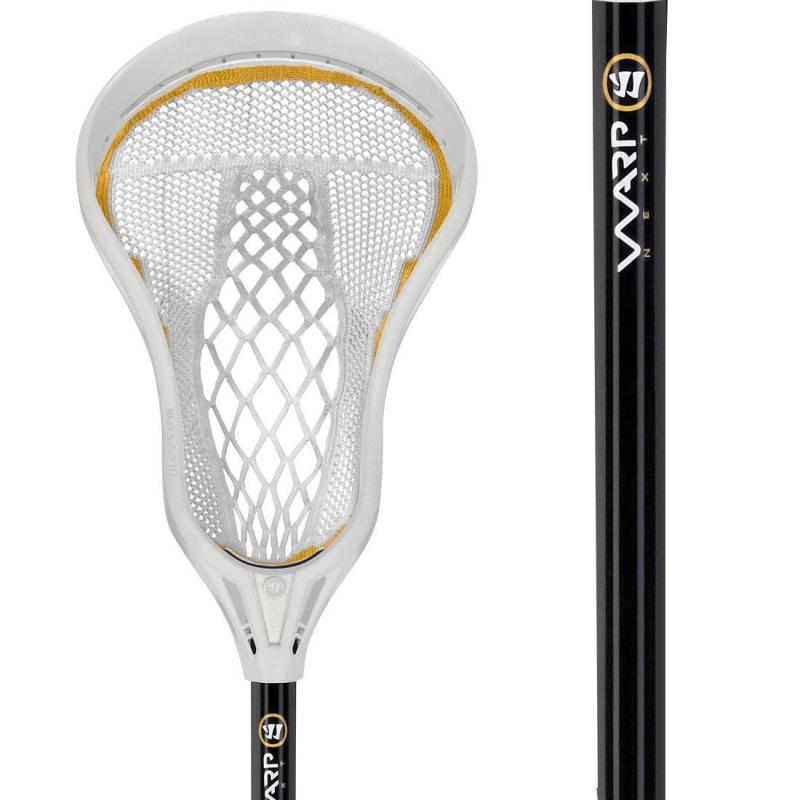
Nailing down fundamental knots like anchors, single and double interlocks, 1s, 1xs, and triple threats requires drilling. Older heads allow you to run through tie-off sequences again and again until they become second nature.
The reinforcement cements proper technique, making it easier to reproduce knots consistently when it counts. Repetition is the key to commit lacrosse stringing to muscle memory.
Perfecting Even Sidewalls
Learning to string clean sidewalls with symmetrical diamonds on each side takes work. Cheaper older heads provide a worthy practice canvas for getting your sidewall game dialed.
Don’t be afraid to cut out and re-string lopsided sidewalls over and over until you achieve mastery. Consider it the stringing equivalent of free throw shooting drills.
Getting Creative With Stringing Designs
Once you have basic fundamentals down, older heads are the perfect place to experiment with wild stringing designs just for fun. Try inventing your own knots, multi-color laces, checkerboard diamonds or unique shooting string blended.
See what kind of crazy string jobs you can bring to life with discarded heads before translating skills to newer heads. It’s a great way to find your style.
Investing in a couple cheap outdated heads solely for practice purposes pays dividends as a beginner. You’ll learn faster and arrive at your go-to pocket and style that much quicker. Stringing success starts with nailing the basics, even if it means ruining a few obsolete heads along the way.
Choose Custom Lacrosse Gear Colors To Stand Out
Beyond pure performance, expressing your unique style on the field is part of the fun of lacrosse. Choosing custom gear colors allows you to personalize your setup and stand out from the crowd.
Major brands now offer full custom color options across heads, shafts, mesh, and even gloves and pads. Taking advantage of custom coloring lets you showcase your personality while intimidating opponents.
Here are some ways to leverage custom colors for next-level swag and lacrosse flair.
Custom Head and Shaft Combos
Mixing and matching colored heads and shafts used to mean piecing together gear on your own. Now brands like Epoch Lacrosse offer fully customized heads and shafts in any color combination imaginable.
Choose gloss colors, premium matte finishes, or even hydro dips with unique designs. A blackout murdered-out stick or vibrant neon setup expresses your style on the field.
Colored Shooting Strings
Stringing companies like Thruster Lacrosse now produce shooting strings in every color under the sun. You can choose specific hues to match your sticks or team colors.
Next-level players design two-tone and multi-color shooting strings for added swag. Colored strings and laces give your stick extra flair.
Custom Dyed Mesh
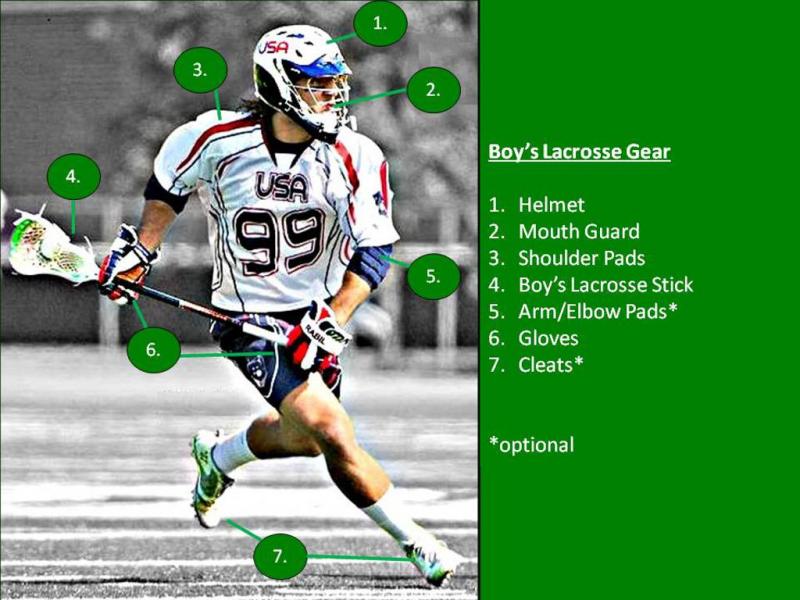
Dyed lacrosse mesh allows for unlimited styling possibilities. Brands like Stringers Society offer custom mesh coloring with fade effects, ombres, camo prints, and more.
Team colors, unique patterns, and premixer primary/secondary mixes help your pockets stand out. Add some personality to your stringing game.
Custom Gloves and Pads
Most lacrosse gear companies allow full customization of gloves, arm pads, and shoulder pads as well. Use team colors and personal designs to achieve one-of-a-kind looks.
STX even offers Stallion 700 gloves with your name embroidered on the cuff for next-level swag. Custom gear makes you feel like a rock star.
Don’t settle for boring stock colors – take advantage of today’s custom options to create your own signature style. Switch up mesh, strings, and accessories across multiple sticks for a different look each game. A custom color scheme intimidates opponents and looks so fresh.
Maintain Your Pocket’s Shape And Pocket Over Time

One of the biggest challenges in lacrosse is keeping your pocket crisp and consistent over time. As mesh breaks in and shooting strings wear, pockets tend to bag out and lose their ideal shape.
With some regular maintenance and tuning though, you can maintain that perfect pocket feel for far longer. Here are some tips for preserving your stringing investment with proactive pocket care.
Periodically Check and Tighten Diamonds
The diamonds formed by stringing the sidewall lace are key to overall pocket structure. As they expand with use, tightening diamonds pulls the pocket back into its optimal configuration.
Every few weeks, gently compress any diamonds that have widened using pliers. Be careful not to overtighten, just gently snug them back to size.
Replace Broken and Worn Shooting Strings
Shooting strings take the most abuse, especially the lowest nylon. At the first sign of fraying, swap in fresh strings and laces. This prevents total failure during games.
Carry spare pre-cut shooting strings in your bag for quick swaps when needed. It extends the overall pocket life significantly.
Consider Periodic Re-Waxing
Wax helps protect mesh and shooting strings from moisture and dirt. Every month or so, re-apply mesh wax to increase weather resistance and smoothness.
Use wax sticks for quick touch-ups after games and practices. Re-waxing keeps pockets crisp by minimizing clogging and friction.
Don’t Over-Stretch Mesh During Stringing
Over-stretching mesh to force tight channels leads to premature bagging out. Focus on gradual break-in through play rather than aggressive pre-stretching.
If diamonds do expand too quickly, gently re-compress them rather than trying to re-string from scratch. Find the balance between hold and longevity.
Know When To Re-String Completely
If shooting strings are popping and mesh is misshapen beyond repair, don’t be afraid to re-string from scratch. Total re-strings allow resetting pocket structure exactly how you want it.
Keep a spare head freshly strung so you always have a ready-to-go backup. Rotate as needed to maximize pocket consistency throughout the season.
With some diligent care, your custom pockets can maintain their peak shape far longer. Follow these tips to minimize deterioration and avoid having to re-string constantly. A tuned pocket is a consistent pocket.
Replace Frayed Sidewall Strings For Optimal Throwing
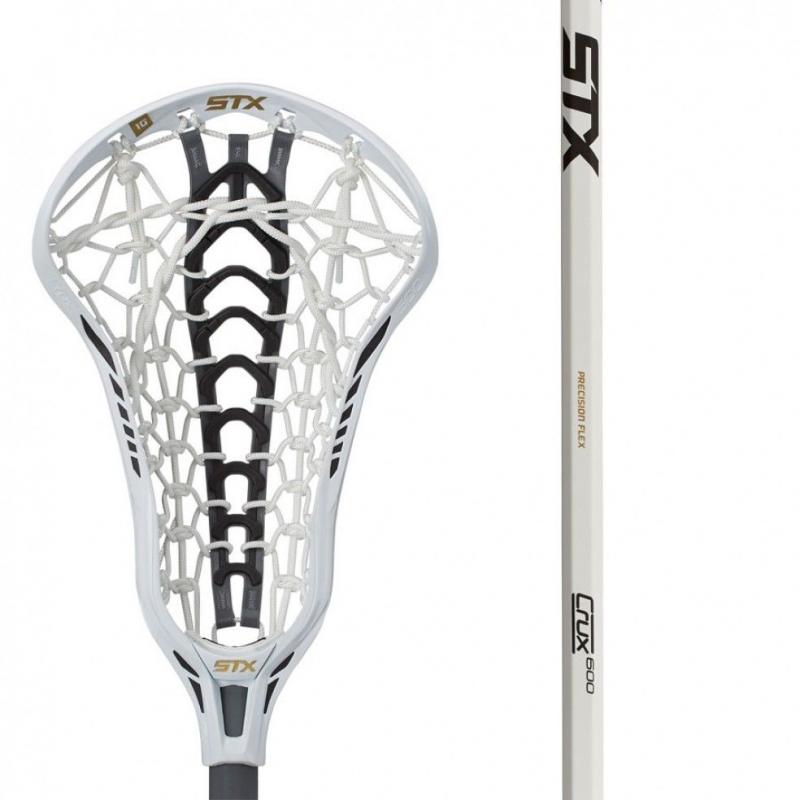
After heavy lacrosse use, sidewall strings can start to fray and deteriorate quickly. Once sidewalls become compromised, passing and shooting precision fade fast.
By preemptively replacing frayed sidewalls before they break fully, you can maintain optimal ball control and throwing accuracy.
Here are some tips for knowing when to swap out sidewalls and how to re-string them for peak performance.
Inspect Sidewalls Frequently
Get in the habit of visually inspecting sidewall strings before and after each use. Check for any signs of wear like loose or widened diamonds, discoloration, and fraying.
Pay special attention around the scoop and at the bottom sidewall tie-off points, common failure points. Catch issues early before they intensify.
Replace at First Signs of Fraying
Don’t wait until sidewalls are completely busted before replacing. Even slight fraying reduces structural integrity. Swap out laces and nylons at the very first signs of degradation.
Carry spare sticks pre-strung with fresh sidewalls so you can quickly sub them in as needed. Saving fraying sidewalls will only cost you accuracy.
Consider Both Leather and Synthetic Options
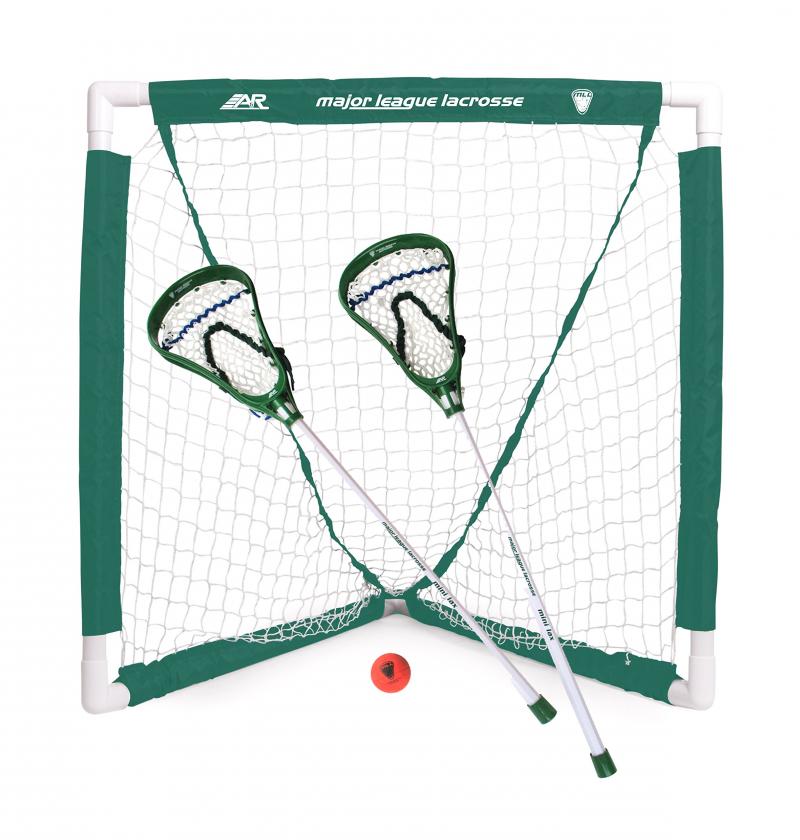
For traditionalists, waxed leather laces add classic control and feel but require more frequent replacing. Synthetics like East Coast Mesh’s nylons offer extended durability through weathering and wear.
Try both to see what you prefer in terms of pocket feel, life span, and performance as sidewalls break in.
Focus on Proper Sidewall Tension
When re-stringing new sidewalls, be careful not to over-tighten and stretch the diamonds. Too much tension prematurely warps the pocket shape.
Use just enough force to keep diamonds snug and eliminate sloppiness for crisp throwing. Err on the side of less tension and let the pocket form naturally.
Consider Adding Sidewall Locks
For extra sidewall strength, incorporate sidewall locks when re-stringing. Locks reinforce diamonds and prevent premature loosening and failure.
Jimalax Lacrosse has great tutorials on incorporating basic and advanced locks to bolster sidewalls. Locks maximize structural longevity.
By swapping out worn sidewalls in a timely manner, you can ensure season-long pocket performance. Don’t settle for deteriorating strings that hurt your passing and shooting prowess. Keep sidewalls fresh for confident throws every time.
Enjoy Experimenting With Unique Pocket Styles And Shapes
One of the coolest parts of lacrosse is customizing your pocket precisely to your preferences. While most players stick to basic pocket styles, don’t be afraid to experiment with unique shapes and configurations.
Pushing pocket design boundaries can reveal surprising benefits for your game. Beyond improving performance, it allows you to express creativity and swag on the field.
Here are some outside-the-box pocket shapes and styles worth trying just for fun.
Inverted U-Pockets
Most pockets utilize a U-shape for the shooting strings. Try flipping the U upside-down for an inverted angled channel. It angles the ball release for unique passing and shooting accuracy.
StringKing’s Justin Skaggs pocket is a great example of the control and quickness an inverted U offers. Open your mind to unconventional stringing.
Over-Exaggerated Shooting Strings
Amp up the drama of your shooting strings with exaggerated shapes like extreme-V’s, elongated diamonds, or sweeping curves. While less common, pronounced stringing looks awesome.
Check out East Coast Dyes’ comment pocket for inspiration on taking shooting strings to the next level. Go big or go home!
Mixed Shooting String Materials
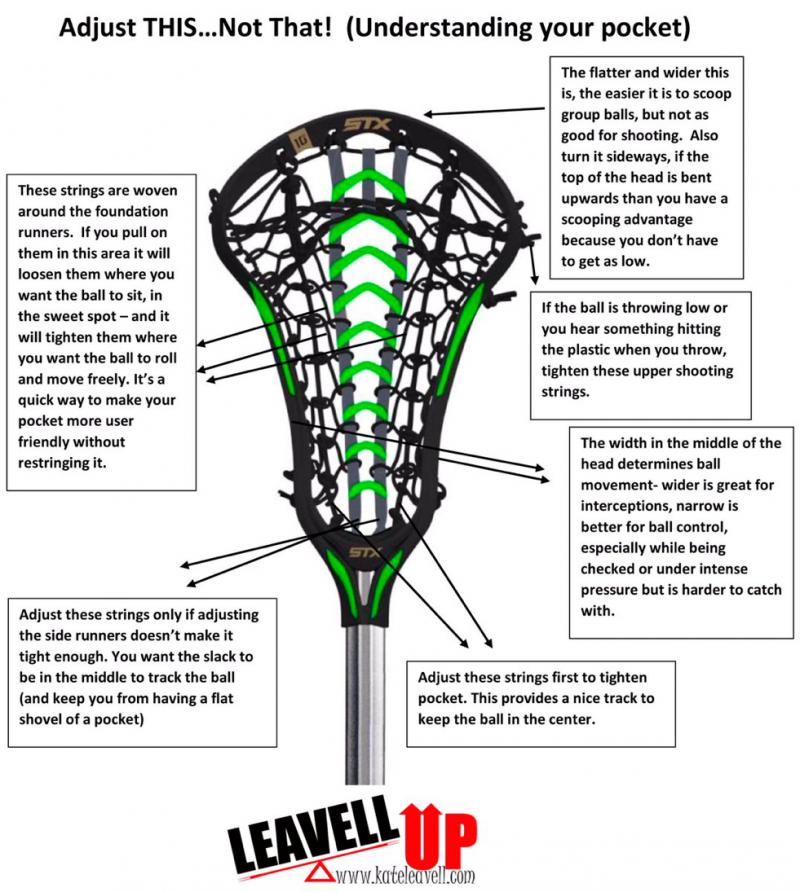
Blending different shooting string materials like waxed laces up top for hold and Dyneema on bottom for speed creates intriguing hybrid benefits. The contrast looks sick too.
Trying unique string combos like leather and nylon, co-polymer and nylon, waxed and unwaxed gives pockets a custom edge.
Asymmetrical Sidewall Stringing
Most lacrosse sticks have symmetrical sidewall stringing on both sides. For a unique twist, try offsetting diamonds on each sidewall for added swag.
You can also experiment with alternating diamond shapes on left and right sidewalls. Keep defenders guessing with atypical sidewalls.
Two-Tone And Multi-Color Strings
Customizing string colors takes pockets to the next level. Two-tone and multi-color shooting strings are fully personalized works of art. Even alternating sidewall lace colors looks so fresh.
Show your creative side through color coordinating and mixing bright shades for that next-level style. The possibilities are endless for one-of-a-kind stringing.
Think beyond basic meshes and strings and try crafting works of pocket art. Even if unconventional shapes don’t improve performance, they will make you the most stylish player on the field. Custom stringing sets you apart.
